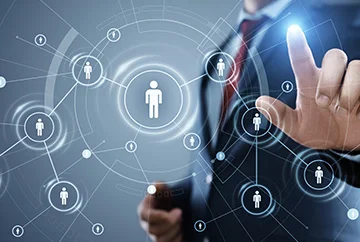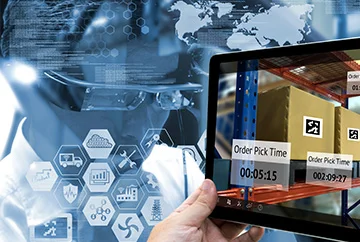Leveraging analytics to respond to economic challenges
COVID-19 has ignited supply chain disruptions with demand volatility and supply availability. It has compelled companies to reduce spending to maintain cash flow in hopes of weathering the storm. It has encouraged people to find innovative ways to increase efficiency, to find ways to do more with less. Enter analytics stage right. During these uncertain times, companies can turn towards data analytics to assist in navigating the choppy waters that can help steady the sails and discover certain outcomes.
During these uncertain times, companies can turn towards data analytics to assist in navigating the choppy waters that can help steady the sails and discover certain outcomes.
- Inventory Analytics: One unpredictable behavioral occurrence from COVID-19 is the run on certain essential products such as toilet paper, hand sanitizers, and certain food items. This has created demand volatility that manufacturers are rushing to adjust to prevent the collapse of the entire supply chain. Data analytics can provide insight-to-action information that can assist with raw material procurement, inventory stock allocation, plant capacity adjustments, etc. to ensure a continual flow of these essential goods. Can I reroute a shipment from a certain plant to a different plant for quicker order fulfillment? How much should I restrict the number of orders from a certain customer or region to ensure a fair and equitable distribution of goods across the country? How much capacity can I increase to meet the increase in demand? These are all questions that analytics can help answer to increase bottom-line improvements.
- Spend Analytics: Companies are understandably holding on to more cash during these uncertain times. They are evaluating their spending priorities to ensure there are enough resources to maintain essential operations. Machine learning algorithms and predictive analytics can assist with what-if spending scenarios to show the return on investment of a marketing campaign, for example. The analytical results can help a company determine what percentage of the marketing budget should be spent on traditional media vs. social media that would maximize the sales opportunity.
- HR Analytics: COVID-19 infections have prevented many essential workers from coming to work. We are hearing news of potential major disruptions to the food supply chain because there aren’t enough healthy and available workers to process an upcoming backlog of the food supply. Instead of shutting down entire plants, companies can use analytics to identify adjustments to staffing assignments, workplace protocols, safety enhancement measures to create efficient solutions that could enable them to maintain operations while providing their workers a safe environment. These solutions could prevent the collapse of the food supply chain that would be catastrophic to everyone.



